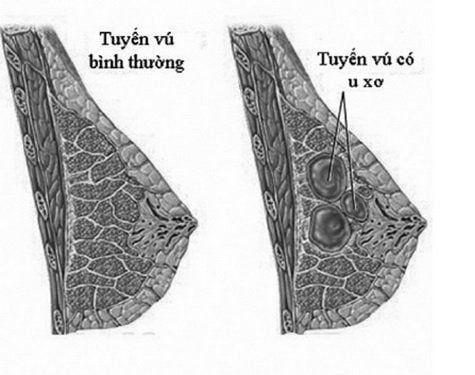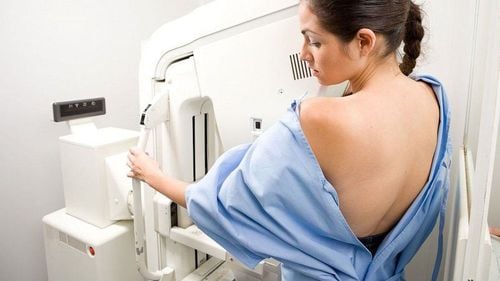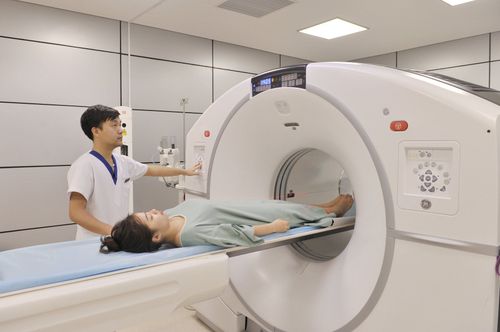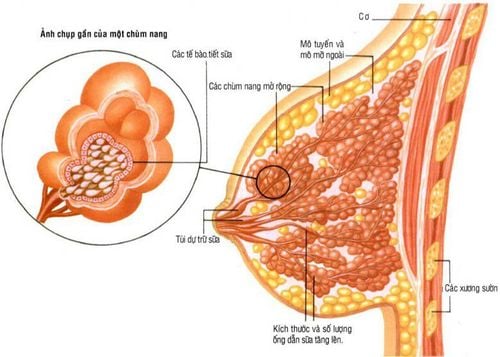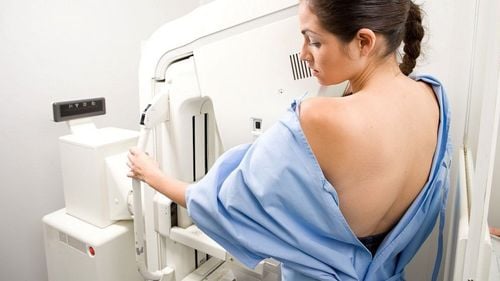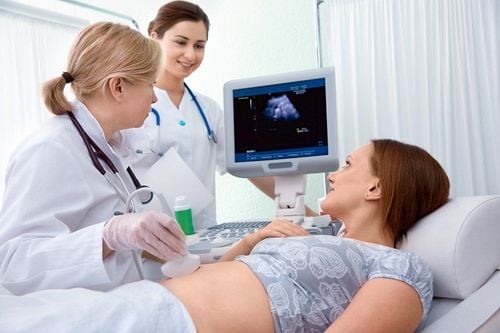This is an automatically translated article.
The article is professionally consulted by Master, Doctor Nguyen Van Phan - Head of Interventional Imaging Unit - Department of Diagnostic Imaging and Nuclear Medicine - Vinmec Times City International General Hospital. Doctor Nguyen Van Phan is an interventional radiologist and radiologist.Fibrocystic changes are a common benign (non-cancerous) condition in women. It's usually not dangerous, but it can be uncomfortable for some women.
1. What is a fibrocystic change of the mammary gland?
Fibrocystic changes, also known as cystic fibrosis, is a condition in which the breast can cause tenderness, breast cysts, and lumps in the breast.It is estimated that more than 50% of women between the ages of 20 and 50 will experience fibrocystic changes at some point in their lives. Currently, medical professionals have stopped using the term "cystic fibrosis" and agreed to use the term "fibrocystic breast change" because it is not a disease.
2. Symptoms of fibrocystic changes in the mammary gland
Most women with fibrocystic breast changes have no symptoms, but some may experience breast tenderness, tenderness, and lumps, especially in the upper, outer areas of the breast. Symptoms may be worse in the premenstrual period.Typical symptoms include:
Pain or discomfort in both breasts Tight, swollen, or heavy breasts Pain or discomfort under the arms Breast lumps that change size with the menstrual cycle If mammary glands appear new lumps or the pain continues to get worse, it's best to see your doctor.

3. Causes of changes in the fibrous gland of the mammary gland
The exact cause of this fibrocystic change is not fully understood, with researchers suggesting it is related to reproductive hormone levels, as the condition usually goes into remission after menopause and also related to the menstrual cycle.Fibrocystic changes are a cumulative process, partly due to the normal hormonal changes in a woman's monthly cycle. The most important of these hormones are estrogen, progesterone, and prolactin. These hormones directly affect breast tissue by causing cells to grow and multiply.
4. Diagnosis of fibrocystic changes of the mammary gland by medical methods
Here are some methods used to diagnose fibrocystic changes:4.1. Physical examination of the breast The diagnosis of fibrocystic changes is mainly made on the basis of symptoms after excluding breast cancer . Fibrocystic changes are mainly diagnosed based on symptoms, physical examination of the breast, and physical examination. During this exam, your doctor will check for abnormal areas in your breasts. In addition, the lymph nodes in the armpit and lower neck area are also examined. A complete and accurate history is also helpful in diagnosing this condition. If the patient's history and physical examination results are consistent with normal breast changes, no additional testing should be considered, but otherwise the patient will be asked to return a few weeks later for further testing. re-evaluate. If there are abnormal symptoms and signs in the breast, you need to have tests such as mammography or ultrasound to make a diagnosis.
4.2. Mammography A mammogram is usually the first imaging test ordered when abnormal breast changes are detected during a physical exam. Mammography using X-rays provides images of early lesions in the mammary glands, helping to diagnose fibrocystic changes in the mammary glands accurately.
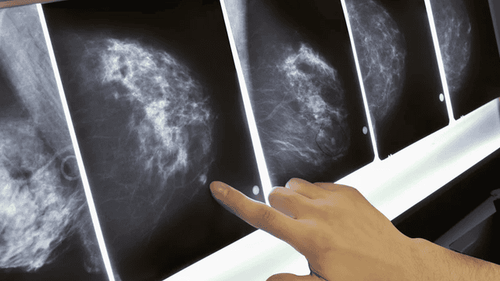
4.4. Breast biopsy A breast biopsy is usually the test used to confirm a suspected diagnosis. Once imaging tests have been performed and abnormal areas or lumps are detected in the breast, a breast biopsy is indicated.
Biopsy is the process of taking a sample of breast tissue, which is then examined under a microscope. The specialist who analyzes the tissue sample will be able to conclude whether the changes in the breast are benign or malignant or if there is a change in the fibrocystic gland.
5. Treatment of fibrocystic changes in the mammary gland
Women who have no symptoms or only mild symptoms do not need treatment. Your doctor may recommend some of the following self-care measures:Take acetaminophen or ibuprofen for pain Applying heat or ice on your breasts Wear a well-fitting bra or sports bra For severe symptoms Instead, your doctor may prescribe hormonal medications. However, it is necessary to monitor, take the medicine according to the instructions and notify the doctor about the unwanted side effects of the drug.
Surgery is not usually done to treat this condition. However, if the tumor is getting bigger and the pain is increasing, your doctor may recommend surgery.
Vinmec International General Hospital is one of the hospitals that not only ensures professional quality with a team of leading medical doctors, a system of modern equipment and technology. The hospital provides comprehensive and professional medical examination, consultation and treatment services, with a civilized, polite, safe and sterile medical examination and treatment space. Customers when choosing to perform tests here can be completely assured of the accuracy of test results.
Please dial HOTLINE for more information or register for an appointment HERE. Download MyVinmec app to make appointments faster and to manage your bookings easily.
Articles refer to sources: mayoclinic.org, healthline.com




